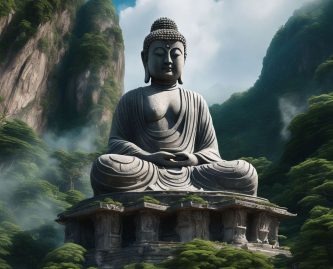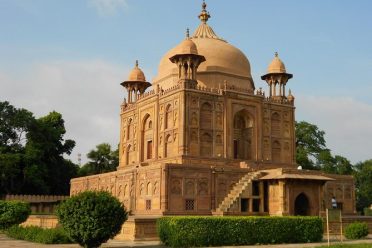Where am I : India Tour Packages » Most Popular Packages » Buddhist Tour Packages in India
View Details
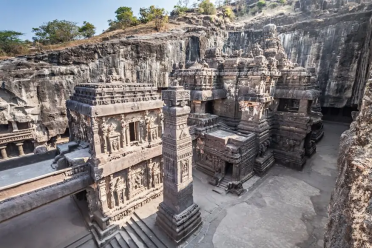
Destinations Covered : Mumbai » Shirdi » Aurangabad
View Details
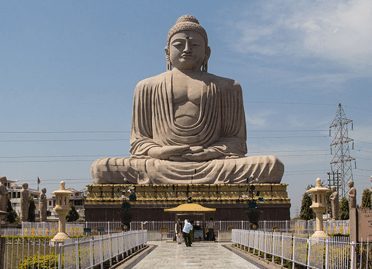
Destinations Covered : Delhi » Bodhgaya » Varanasi » Kushinagar » Lumbini » Kapilavastu » Shravasti » Lucknow
View Details
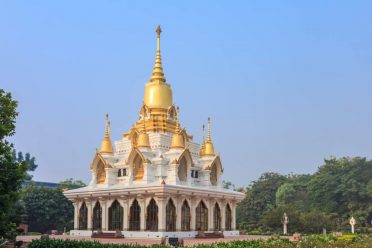
Destinations Covered : Varanasi » Bodhgaya » Patna » Kushinagar » Ayodhya
View Details
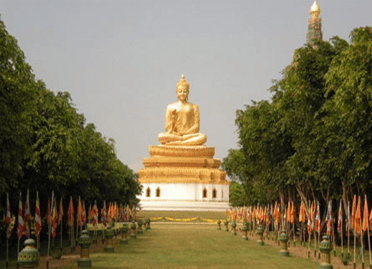
Destinations Covered : Varanasi » Bodhgaya » Rajgir » Nalanda » Patna » Kushinagar » Lumbini » Kapilavastu » Shravasti » Balrampur » Lucknow
View Details
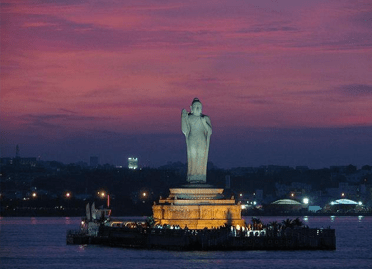
Destinations Covered : Mumbai » Aurangabad » Hyderabad » Nagarjunakonda » Vijayawada » Amravati » Rajahmundry » Visakhapatnam
View Details
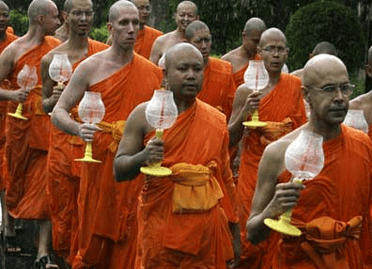
Destinations Covered : Delhi » Agra » Lucknow » Balrampur » Lumbini » Kushinagar » Patna » Bodhgaya » Varanasi
Buddhist Tour Packages in India
Buddhism is one of the oldest religions globally. This religion has thrived in India since the 3rd century BC. Scores of Buddhist pilgrims come to India each year, seeking the total serenity offered by Buddhist destinations. These beautiful destinations are linked to the life and sermons of the Buddha in a significant way.
A Travel to Buddhist India is one of the most sensational and remarkable experiences one can go through during their trip. Covering cities like Delhi and Varanasi immerses you in the heart of the culture, tradition, and architectural wonders present in the rich heartland of India. Next up is Sarnath and Bodhgaya, an extraordinary sight for nature lovers and a place that holds great importance in the life cycle of the Buddha.
What is Buddhism?
Buddhism is a worldwide religion that occupies the fourth position in terms of the number of practitioners, with more than half a million adherents and 7% of the world population. This large number of believers is because it is one of the great religions of the nation with the most significant number of inhabitants in the world, China, as well as in much of Asia.
Like the rest of such great religions, Buddhism has several different schools or disciplines, so depending on which one is a part of, the path to inner peace is sought in one way or another. Another reason for the differences between the schools is that not all follow the Buddhist writings and sources in the same way. Some see it more or less faithfully.
When discussing the area of expansion of Buddhism, we must say that today almost all the nations of the world have a small percentage of Buddhist believers due to the increasing globalization that this belief has reached nations like the United States or the United Kingdom. The area with the highest prevalence of the Mahayana Buddhist branch is East Asia, while the area of the Theravada path is found in Sri Lanka and Southeast Asia.
Buddhist in India
Although Buddhism was born in India as a branch of Hinduism, it almost disappeared during the Muslim invasions. Its origin is in the teachings of Siddhartha Gautama, a prince who left his destiny to become Buddha and create a new spiritual and religious path. A new religion that eventually became the fifth most widespread religion globally. Today, Buddhism has spread again in India, being one of the most visited places by Buddhist pilgrims searching for the sacred places of Buddhism.
The most emblematic places of Buddhism in India are the city of Lumbini, the birthplace of the Buddha; Bodhgaya, the site where he received enlightenment; Sarnath, the city in which he gave his first speech and Kushinagar, the place in which he passed away and in which he attained nirvana. If you would love to discover these sacred spaces, in this Salir.com article, we offer you a selection of the best Buddhist temples in India that will amaze you.
How many Buddhists are there in India?
Buddhism as a religion appeared on the territory of India, but there are not many adherents of this religion in the country. How many Buddhists live in India? Approximately 8 million people are only 0.8% of the total population. Hinduism can be called a religion that encourages various colorful festivals and holidays, which was extremely popular with ordinary people and local rulers. And Buddhist monks spent time in meditation and expected this from others, which did not suit many. Gradually, Hinduism was adopted by 80% of the population of India.
Cultural, and Religious Sites in India
The cultural and religious significance of the places where Buddha lived is very significant. These places also attract many tourists. Also, these places serve as a center for promoting Buddhist culture. The pilgrimage itself is an essential attribute of every religion. The followers of the Buddha, visiting these places, try to spiritually approach their Buddhist mentor and try to joke spiritual intimacy with him. The cultural significance of these places is also great. Here you can feel the full significance of the history of these places stretching back into the distant past. There are many temples and temple complexes, thanks to which tourists can see and feel the culture of that time. Many monuments show how strong their culture and religion are to the Indian people. Indeed, thanks to their faith in their religion, many monuments were restored and buried until our time. It is a pity that most of them can no longer be restored, but the remaining fragments are stored in the museums of this country. Everything has been done in these places so that tourists and pilgrims feel comfortable and can fully appreciate these places of interest.
Current Status of Pilgrimage Sites in India
Lumbini is now fully open to tourists and pilgrims. A tourism and pilgrimage center will be built here to increase the number of tourists. Bodh Gaya is also open to pilgrims and tourists. There are many memorial sites associated with the Buddha. Around the Temple of Mahabodhi are temples of other countries in which Buddhism also exists. Seminars and conferences are regularly held here, and performances by Buddhist teachers. The complex is now operating normally. Sarnath is now a small town, many monuments were destroyed, but some survived and can be seen with your own eyes. This place is also open to pilgrims and tourists who regularly visit Sarnath. Like the capital places, Kushinagar is open to tourists and pilgrims; there has not been any restoration here for a long time.
Buddhist Destinations
The Buddha is the most crucial figure in Buddhism. Born in 563 in what Nepal is now, Buddha founded the teachings of Buddhism. Just as adherents of other religions have unique sacred places for pilgrimage, several critical Buddhist sites are scattered worldwide. Various places are considered sacred and sacred by some adherents of certain beliefs throughout the world. These places are often places commonly used for certain religious practices or beliefs.
These places exist and are abundant in various parts of the world, as we already know. Besides that, the background of the beliefs held by everyone around the world is also very diverse. For example, in Islam, the mosque is a holy place and is considered the most sacred place by adherents of the Islamic religion. In addition, there are various other sacred places held by various religious beliefs in this world. For you who want to visit a Buddhist tour destination, we collect some destinations that are certainly not to be missed for Buddhists.
Sarnath, India
Sarnath is located just ten kilometres from the city of Varanasi. It is also known by other names such as Mriga Dava, Rishi Pattana, or Isipatan. It is a Buddhist pilgrimage center, one of the four sacred places that must be visited. Thousands of devotee's flocks to it every year. It is said that it was here that the Buddha delivered his first sermon after he had attained enlightenment or nirvana. He had already been sanctified as the Maha Dharma Chakra Parivartan sutra.
Sarnath in India was where the Buddha gave his first sermon, taught the Dhamma (including the four noble truths and the eightfold path), and formed the Sangha, a monastic community. Visiting this pilgrimage site, you can find the Dhamek Stupa, up to 128 feet high, and other ancient stupa remains. In Sarnath, the traveler who wants to visit the places of Buddhism in India will be able to find some other fantastic stupa. The stupa is a hemispherical or bell-shaped stone monument that once served as a Buddhist sanctuary.
The traveler who goes to Sarnath can also find a miniature archaeological museum where he will find some objects found during the excavations. Among these objects, the most outstanding pieces are a red statue of Buddha adopting the lotus position and capital from the Ashoka temple.
Mind rolling, Dehradun
Mind rolling is one of India's most famous religious sites for Buddhist travel India. It is located near the Rajaji National Park in the Dehradun district of Uttarakhand. Buddha temple of this monastery is one of the major tourist attractions and a remarkable architectural wonder.
Bodhgaya, Bihar
This place is one of the most critical places globally. Bodhgaya is a town in Bihar where Gautama Buddha attained enlightenment. After many failed attempts to understand life, the Buddha stopped to rest under a tree. He claimed that he meditated whenever enlightenment was necessary to understand his life goal. It is said that it took him seven weeks to know the purpose of his life. The tree where the Buddha sat is known as the Bodhi tree.
Bodhgaya tourism packages has many attractions for tourists and pilgrims who want to know about the sacred places of Buddhism in India. In Bodhgaya tour packages, you can find countless temples and, above all, a marvellous and gigantic statue of Buddha, which Japan gave the Indian people. The spectacular Buddha we are talking about is about 25 meters tall and is, without a doubt, one of the jewels associated with Buddhism.
The Maitreya Temple in Ladakh
In the impressive monastery of Thakrey in Ladakh, the Maitreya Temple is located. The monastery is located in an exceptional setting, on the side of a hill and with numerous buildings arranged in height. In this small fairy-tale city, this magnificent Temple stands out, where you can admire an imposing statue of the Maitreya Buddha, about 15 meters high. This set was built in 1970.
Shravasti, India
Located close to the western Rapti River, Uttar Pradesh, Shravasti, is another Buddhist pilgrimage site in India. Shravasti itself is an ancient city that became one of the largest cities during the Buddha's lifetime. The city later became an important pilgrimage site for Buddhists and tourists. During his lifetime Buddha spent most of his post-enlightenment time in Shravasti.
It is said that Shravasti is the place where Buddha got the Twin Miracles, where the Buddha emitted fire from the upper part of his body and water from the lower part. You can visit interesting places while in Shravasti buddha tour are Jetavana Monastery, Anatha Indika Stupa, Angeliana Stupa, and Ananda Bodhi Tree.
Kushinagar, Uttar Pradesh
Kushinagar is a considerable place for those who follow Buddhism. It is a must-see place on Buddhist tours because it is where Gautama Buddha died and attained Parinirvana. This place is situated 56 km from the city of Gorakhpur. Like other Buddhist holy places in India, Kushinagar owes much of its splendor to the Indian Emperor Ashoka. It was he, in short, who ordered the construction of a large part of the ancient monuments of this city.
For any Buddhist pilgrim, there are two must-see places in Kushinagar. One of them is the Mahaparanirvana stupa, built on the spot where the Buddha attained paranirvana. In this place, surrounded by the ruins of ancient Buddhist monasteries, you can find a thousand-year-old image of the Buddha in which he is shown at the moment of reaching paranirvana. At Parinirvana Stupa, there is a reclining statue of Gautama Buddha showing the time of his death, and the Ramabhar Stupa is the place where he was cremated.
Thiksey Monastery, Ladakh
Thiksey Monastery, located in the Indus Valley, serves a dual purpose for any guest – one must worship Lord Buddha. The other must enjoy the excellent hilltop location and fabulous air of this place. The place also has a museum that has preserved ancient relics and art from the Buddhist period. The Maitreya Temple is the most famous among tourists in this monastery because of its 49-foot-tall statue of Buddha.
Ladakh area, mountains of India
Ladakh is a region inhabited mostly by people of Tibetan descent, so there is a tremendous Buddhist culture. Numerous monasteries decorate this desert, located at a high altitude that you cannot miss visiting them to be surprised by their architecture and history. These monasteries in Ladakh are genuinely a living heritage of the Buddha and are worth visiting.
Mahabodhi Temple, India
The Mahabodhi Temple in Bodhgaya in India is the Buddhist temple par excellence for being where Siddhartha Gautama reached enlightenment, becoming Buddha. Built of bricks between the 5th and 6th centuries of our era, the Temple has a 55-meter-high pyramidal tower in the center surrounded by four similar smaller towers in the four corners.
Inside the Temple is the colossal gold-plated image of the Buddha in a ground-touching posture. The Temple is owned by the state of Bihar and is administered by members from India and other Buddhist countries, including Burma, Bhutan, Cambodia, Korea, Japan, Mongolia, Sikkim, Sri Lanka, and Thailand.
Other Buddhist destinations in India are worth visiting.
You can visit other outstanding temples of Buddhism in India. Being especially interesting to go to the Tsuglagkhang complex in Dharamsala. This complex is the seat of the Dalai Lama and houses a Tibetan Museum and two highly revered temples, the Kalachakra Temple and the Tsuglagkhang Temple. In the first of the temples, you can admire some extraordinary murals, while in the second, there is a three-meter-high golden statue of Sakyamuni Buddha.
And we close this list with another of the most impressive Buddhist temples in India, the Golden Temple of Karnataka, in the Namdroling Monastery, in the country's south. A temple that is worth seeing both for its dimensions is the second-largest Temple in the country and has a prayer hall decorated with gold and enormous golden statues of Buddha. It is located in a restricted area for foreigners and requires a special permit.
The list is even broader with monasteries and temples in which art is combined with the teaching of the Tibetan Buddhist religion, being unique places for prayer and meditation. Discover your most spiritual side!
How to get to Buddhist sites in India
The main places of pilgrimage are located in the Ganges basin in Northern India and Southern Nepal, between the city of Delhi and Rajgir. It is easier to get to Delhi to Lumbini tour package from Kathmandu; you need to take a bus that goes to Sunauli. Get off at Bhairava, a few kilometers short of the border. It is also better to get to Bodh Gaya through the holy city of Varanasi, you can take a train or bus to Gaya, and from there, you can already go by car or bus to Bodh Gaya. The easiest way to get to the next place, Sarnath is also through Varanasi, there are only 13 kilometres. You can take a car or a velariksha. It is also easier and faster to get to Kushinagar from Varanasi Buddhist tour packages. From the city of Varanasi, a bus ride to Gorakhpur, then by car to Kushinagar.
Travel to Buddhist India. If you plan to travel to India in August, plan your trip with India's Invitation now, and we will create the best trip considering the weather and other conditions.
Buddhism the philosophy of detachment which was perpetuated by the sermons of one Siddhartha Gautam also known as Gautam Buddha. Gautam Buddha was a prince and he had everything one could dream of but he was still in misery. He left his palace and saw that all his subjects from poor to rich were going through the same. He realized that to get rid of his misery he had to break the cycle of cravings and aversions. After his realization and liberation, he attained Nirvana in India. After attaining the end goal, he started sharing his knowledge with others to help them with their misery as well. He gained a large following and now his philosophy is renowned all over the world. If you choose to travel with Delight India Leisure Holidays, you will get an opportunity to experience the history of this philosophy. Some of the places that you will get to visit are: -
Lumbini- Known as one of the world’s most spiritual site, this UNESCO world heritage site in Nepal is where Gautam Buddha was born. Queen Mahadevi gave birth to a baby boy in the year 563 BCE. His parents like any other parent expected a lot from their son but little did they know about his destiny, little did they know what he’ll go on to achieve, that he’ll attain a level of consciousness which will remain unparalleled till the present day. In Lumbini, you will get to visit a pillar discovered in Rupandehi in 1896 marking the spot where Ashoka the great (a king who reformed and became a Buddhist monk after the great Kalinga war, where thousands died) visited Lumbini. You will also get to visit various older temples, including the Mayadevi temple, and various new temples that have been funded by manifold Buddhist organizations from all over the world. You will also get to visit Puskarni, the holy pond where Buddha’s mother took a ceremonial bath before his birth. This is also the place where Buddha was bathed for the first time.
Bodh Gaya- Located near the banks of river Neeranjana in Bihar, India. Bodh Gaya is said to be the place where Buddha attained Nirvana. It is said that Buddha made a determined claim that he won’t move from a spot under a tree (Maha Bodhi tree) until he attains Nirvana. He gave up food and started living in austere conditions, after a while he became weak and realized that this wasn’t the right way to attain his goal. He ate food for which he was mocked by 5 ascetic men who belittled him for rejecting asceticism, to which he replied, "Austerities only confuse the mind. In the exhaustion and mental stupor to which they lead, one can no longer understand the ordinary things of life, still less the truth that lies beyond the senses. I have given up extremes of either luxury or asceticism. I have discovered the Middle Way". After this explanation, those 5 men became Buddha’s first disciples. This place is the biggest pilgrimage destination for all Buddhist sects around the world. Here you can visit the Mahabodhi temple which was built right next to the Mahabodhi tree.
Sarnath- Sarnath is a place located 10 kilometres north-east of Varanasi, near the confluence of the Ganges and the Varuna rivers in Uttar Pradesh, India. Sarnath is where Gautam Buddha gave his first sermon after attaining enlightenment in Bodh Gaya. He explained how there are four noble truths of life, they are: 1. There is suffering; 2. Suffering has a cause; 3. The cause is removable, 4. There are ways to remove the causes. Buddha stipulated an eight-fold path to support his ideology: Right speech, Right action, Right livelihood, Right effort, Right mindfulness, Right concentration, Right attitude and Right views. He said that this was the road to salvation. Here you can see a pillar that Ashoka built to commemorate different phases of Buddha’s life. Here you will also get to see Thai Temple with Buddha’s statue being the quintessential attraction. You can also see the Bodhi tree which was grown from a part taken from the original Bodhi tree in Bodh Gaya.
Balrampur- Balrampur district in Uttar Pradesh, India, is where Gautam Buddha displayed his paranormal powers to spiritually reform Angulimala, a dacoit who wore a necklace (mala) of fingers (anguli). His transformation is the prime example of the par excellence of the redemptive power of Buddhism. Moral of Angulimala’s transformation is that no matter how lost someone is they can always find the right path and change their life for the better. Here you can visit Saheth and Maheth, Saheth covered an area of 32 acres, it was the site of the Jetavana monastery. It became an important place of pilgrimage, adorned with numerous shrines, stupas and monasteries. The stupas belong mostly to the Kushan period, while the temples are in the Gupta style. Maheth covers an area of about 400 acres and has been identified with the remains of the city proper and is located about 0.25 miles to the north-east of Saheth. The ruins of Maheth contain two stupas: 1. Pakki kutti- is said to be that of Angulimala; 2. Kacchi Kutti-is said to be that of Sudata, one of Buddha’s disciples.
Kushinagar- A Buddhist pilgrimage site located in the district of Kushinagar in Uttar Pradesh, India, is popular for being the place where Gautam Buddha passed away and was cremated. There are still many conflicting theories regarding Buddha’s death, some say that he died of food poisoning after consuming either pork or mushroom while others argue that Buddha had already predicted his death as soon as he turned 80 and died because of mesenteric infarction. It is said that even in his final hours he asked his attendants whether they had any doubts or questions and cleared them in a way unlike any other person could until they had none. Buddha’s final words are reported to have been, “All composite things are perishable. Strive for your own liberation with diligence.” On his deathbed, Buddha is famously believed to told his disciples to follow no leader. In Kushinagar, you will get to visit the Parinirvana Stupa where you can find the reclining nirvana statue of Buddha. The statue is 6.10 meters long and is made of monolith red sandstone. It represents the "Dying Buddha" reclining on his right side with his face towards the west. It is placed on a large brick pedestal with stone-posts at the corners.
Kandy- Kandy is a major city in Sri Lanka in the central province. Here you can visit the temple of the sacred tooth relic which was recognized as a world heritage site by UNESCO in 1988. After Gautam Buddha was cremated, the tooth relic was preserved in Kalinga by Ashoka. Later it was smuggled to Sri Lanka by Princess Hamali, on the instructions of her father King Guhasiva. It was the responsibility of the monarch to protect this relic, gradually it began symbolizing the right to rule.
Aurangabad- Aurangabad is a district in Maharashtra, India. Here you will get to visit the Ajanta and Ellora caves. These caves have been recognized by UNESCO as World Heritage Sites. Ajanta caves are approximately 30 rock-cut Buddhists cave monuments that were used as a retreat by Buddhist monks. These caves paintings and rock-cut sculptures depicting the beauty of Indian art. Ellora caves are a mixture of diverse cultures, here you can find paintings and sculptures depicting Indian, Buddhist and Jain cultures. This is also an important Buddhist site where you can see paintings and sculptures depicting Buddhist cultures.
Gangtok- Gangtok is a city in Sikkim, India. Here you will get to visit Enchey Monastery, Enchey monastery is 200 years old, and its literal meaning is ‘the solitary temple’. This monastery is not affiliated to Buddha, but it’s still considered as a very important site by Buddhists. This is the most recognized monastery in Sikkim.
Kalimpong- Kalimpong is a city and a municipality in West Bengal, India. Here you will get to see Zang Dhok Palri Monastery that is located atop Durpin Hill. This monastery was consecrated by the Dalai Lama in 1976. This monastery has many scriptures that were brought in India after the invasion of Tibet in 1959. It also houses the 108 volumes of the Kangyur. It is also popularly known as the Lava Monastery. Here you will also get to visit monasteries like Thongsa Gompa, one of the oldest monasteries in Kalimpong established in 1692.
Kathmandu- Kathmandu is the capital of Nepal. Here you will get to see the Boudhanath Stoupa, one of the largest spherical stupas dominating the skyline of Nepal. It is aa UNESCO world heritage site. You will also get to visit the Swayambunath monastery which is located on a hilltop of Kathmandu valley. It is regarded as one of the oldest monasteries in the world. The monastery is also known as the monkey temple as large tribes of monkeys can be seen there regularly. Swayambhunath Monastery is complete with Buddha's eyes looking out across the valley, an iconic symbol. Another famous monastery that’s located in Kathmandu is Kopan, located on top of Kopan hill. The monastery is home to over 300 Tibetan Buddhist monks. Dominated by a magnificent Bodhi tree, it was once the home of the astrologer to the King of Nepal. The Kopan Monastery also offers a panoramic view of the town of Boudha below and the spectacular Himalayan Mountain range.
Speak to our Experts!
Instant Quote, Best Deals - 100% Customizable, Includes hotels + car + guides Cost depends on various factors like, number of people you are, travel dates, category of hotel and transportation etc.Drop your Inquiry to get the best deals as per your requirements. 100% Satisfaction Guaranteed. Rated 5* in TripAdvisor.



